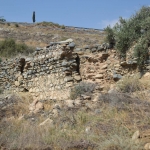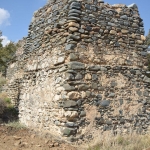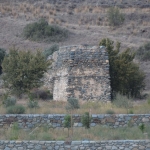Natural Environment
In the past, Orounta was covered in green and was surrounded by a forest. Unfortunately, however, the forest was scalped since the residents needed to cut the trees to make charcoals to light their furnaces.
Nowadays, there are mainly cultivations with citrus fruits such as lemon, orange, and grapefruit trees, vegetables, potatoes, almond trees, grains, carob trees and pulses. In the old years, there were also cultivations of flaxes, cumin and aniseeds. Moreover, there are many olives in the valley of Peristerona, some of which have stood like sleepless guards for many years, possibly even from the Frankish period.
Sources:
“Orounta”, 1993
Karouzis, Strolling around Cyprus, Nicosia, City and District, Nicosia 2002
Great Cyprus Encyclopaedia, vol.11
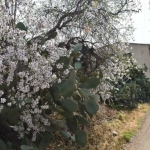
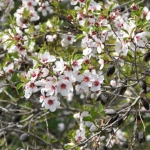
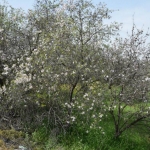
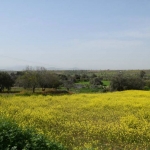
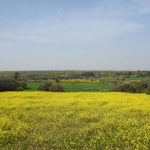
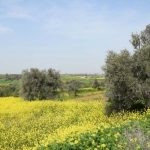
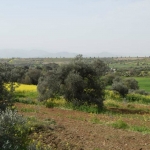
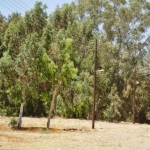
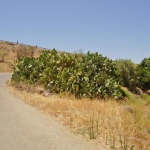
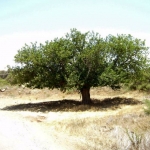
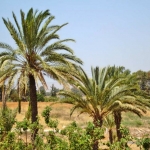
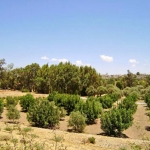
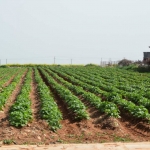
Olive Cultivation
Olive cultivation constitutes one of the occupations of the residents of Orounta.
Presented below are the main cultivating cares regarding olive trees:
Preparing the ground is one of the first tasks olive cultivators need to perform. For the soil to be ready, it must be enriched with nutritious elements and be freed from pesticides.
Pruning the olive trees is very important for their productivity. This takes place either at the beginning of spring or during the harvest period. During pruning, all branches which are considered useless are cut so that only the fruit-bearing branches will remain on the tree.
The irrigation of the olive trees must be carried out with extreme care since olive trees do not require frequent irrigation. However, during the florescence period, that is during the spring months, the irrigation of the olive trees is crucial both for the increase of their production as the quality of their fruit.
The harvest period takes place from the end of October until the end of February. To collect the olives cultivators use the traditional method of caning, as well as modern methods with modern machinery.
The traditional method of caning includes beating the olive tree with a wooden stick to that the olives will fall to the ground and more specifically on the huge sheets which are previously placed under the trees. Next, the olives are put into cases and transferred to the olive oil press for the production of olive oil.
Finally, some olive cultivators follow the traditional method for the multiplication of olive trees called grafting. This particular method involves attaching a branch of olive tree to another tree, while it takes three years after it has been planted for the tree to produce any crops
Source:
Ionas Ioannis, Traditional Cyprus Professions, Nicosia, 2001, p.487-49
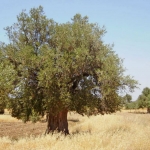
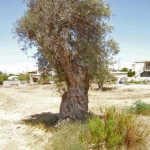
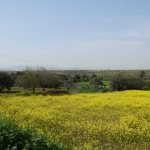
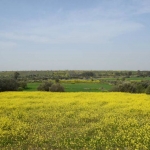
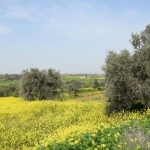
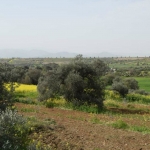
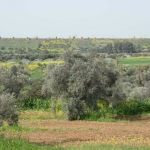
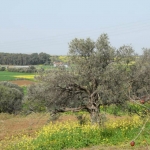
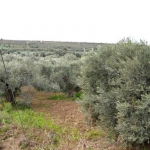
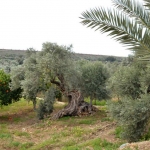
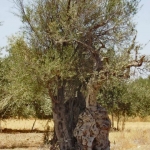
Almonds Tree
The almond tree is a local Mediterranean deciduous tree of small dimensions. The cultivation of the almond tree appears to have spread in other Mediterranean countries by the Greeks and the Romans, whereas its cultivation in Cyprus is dated back to the very ancient years.
The almond tree belongs to the family of the Prunus trees and its naming constitutes the common name of the species Prunus amygdalus communis.
Its main feature is that it blossoms before its leaves appear. Its flowers are impressive, white and pleasant to smell, whereas its petals bear a slightly rosy colour just before blossoming. Its leaves are bayonet, notched with a small stem. Its crops, the well-known almonds, are edible oval drupes with a sharp edge. Its shell, instead of being fleshy like all other stone fruits, is in fact a green and grey shell with a thin down which contains one or two seeds enclosed in a wooden shell with multiple holes. The seeds have a white flesh and their variety determines whether they are sweet or bitter.
The taste of the almonds determines the usage of the different varieties. The sweet almonds are used as table dry nuts, in the making of sweets, in almond byproducts, in drinks, as well as in the extraction of edible oil. The bitter almonds are used in the pharmaceutical industry as palliatives for asthma and cough, as well as in perfumes. Moreover, a type of oil which contains prussic acid also known as hydrogen cyanide and which is a well-known poison is also extracted from these almonds. This substance is removed from the core of the seeds by washing them with alkali so that the almond oil produced could be used in the production of perfumes.
The almond tee is an indigenous plant originating from western Asia and South Africa and apart from Cyprus it is widely cultivated in Greece, Spain, Turkey, Morocco, Tunisia and Egypt.
Almond wood is heavy and hard and is considered to be suitable for fine carpentry.
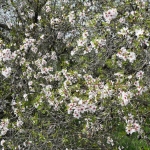
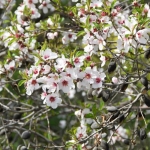
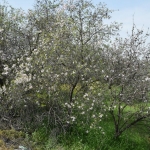
Water Mill
